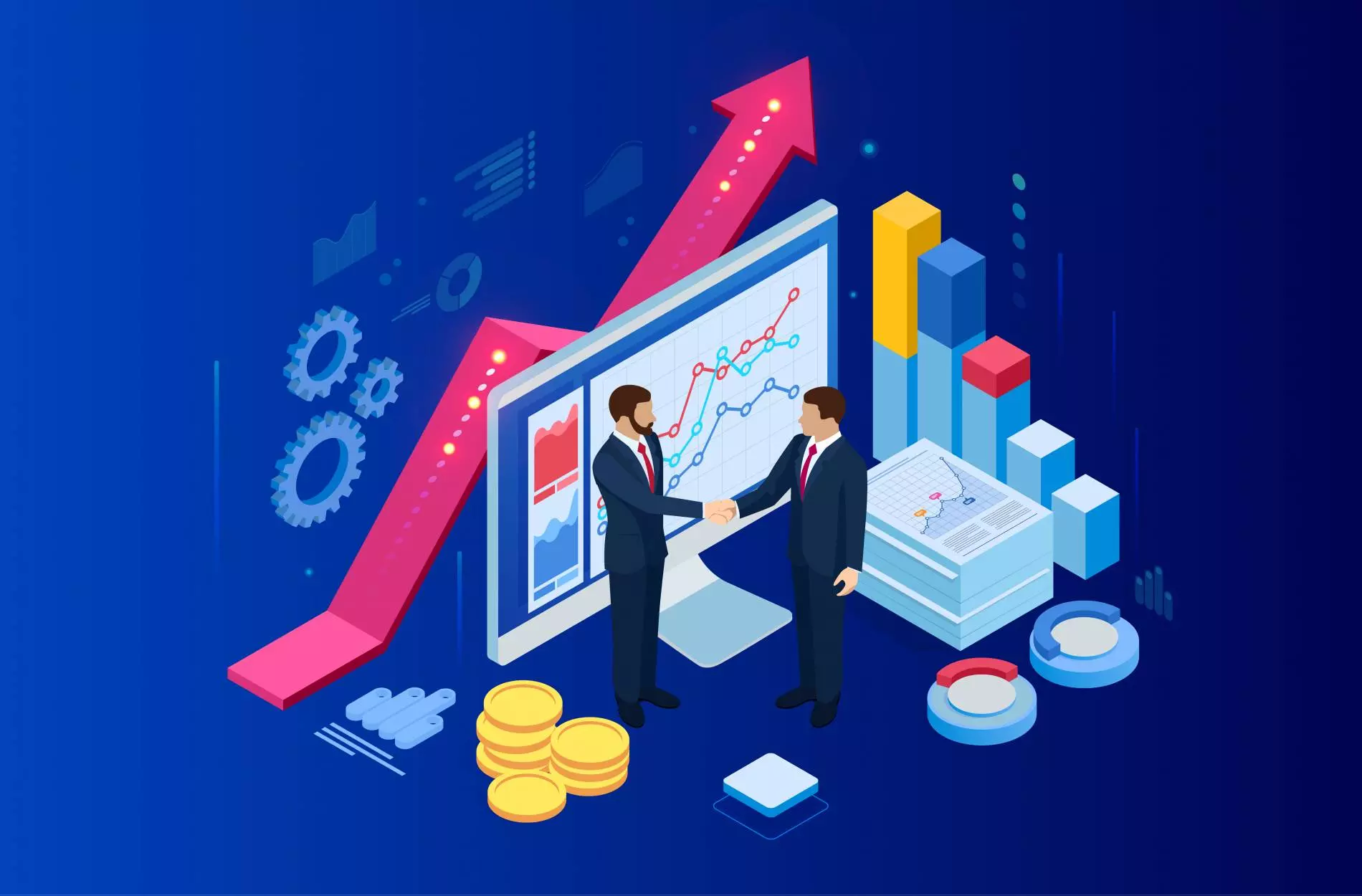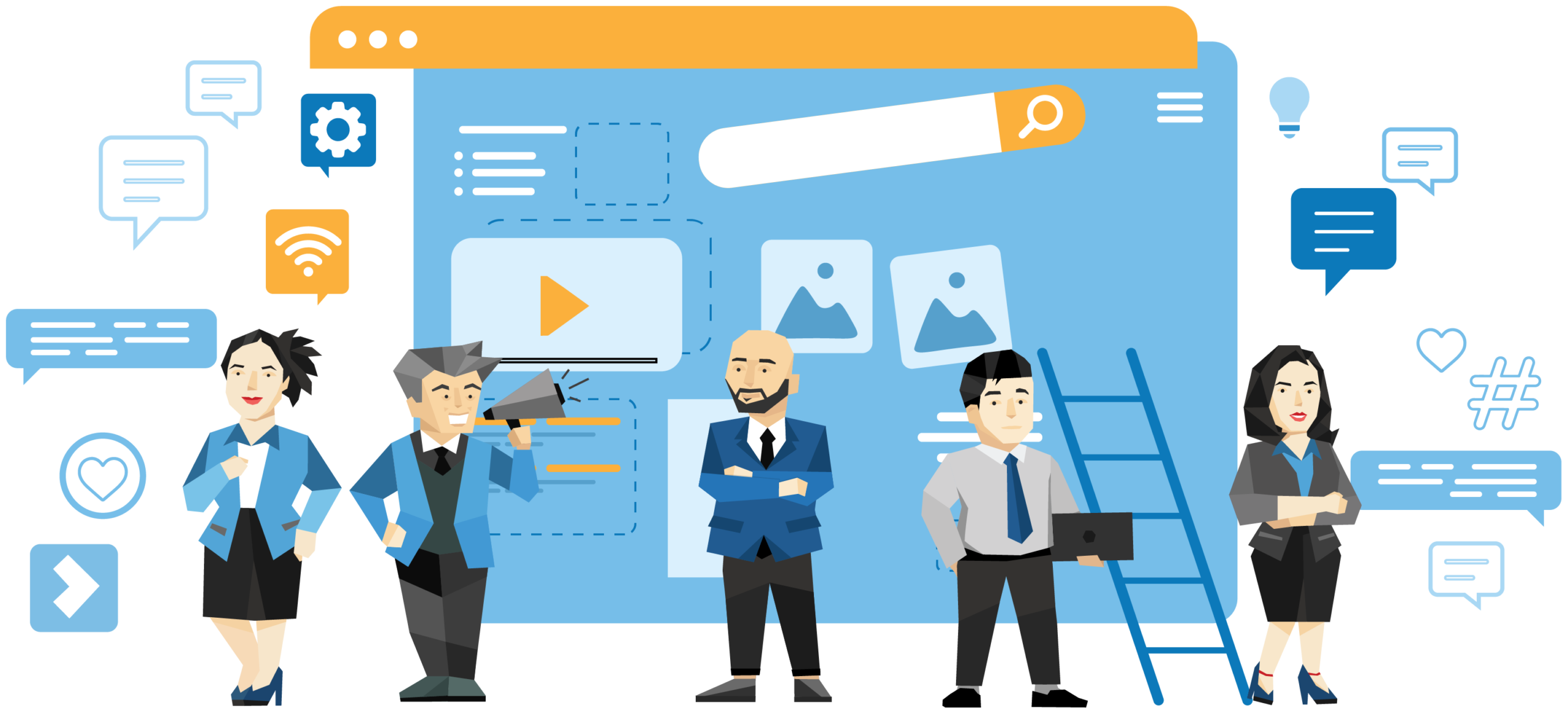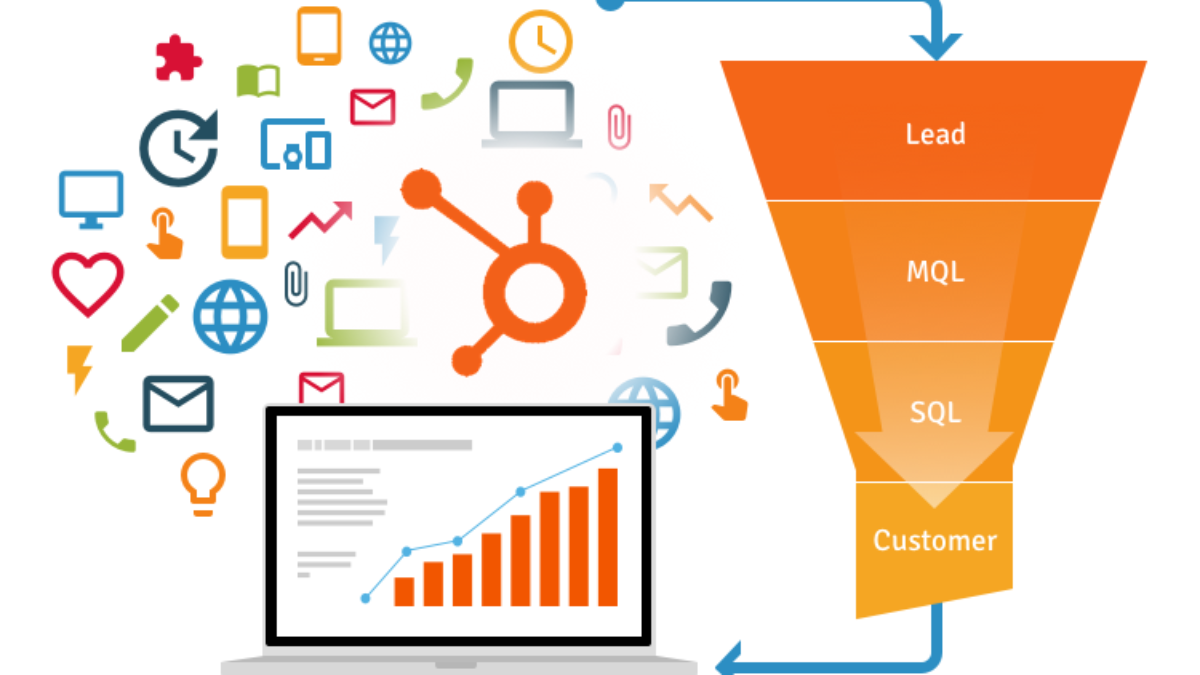
Cultivating Seamless Customer Support in the Age of AI Marketing
September 27, 2023
Mastering B2B Lead Generation: The Power of Paid Advertising
September 28, 2023Understanding the Importance of B2B Lead Generation
In the vast and intricate world of B2B (business-to-business) commerce, the lifeblood of any enterprise’s growth and success lies in the ability to generate high-quality leads consistently. The concept of B2B lead generation isn’t merely about accumulating contacts or email addresses; it’s about nurturing relationships with potential clients who are genuinely interested in your products or services. These leads, when handled with care and expertise, can metamorphose into long-lasting, profitable partnerships.
B2B lead generation is a multifaceted process that involves identifying, attracting, and engaging prospective clients. The crux of this intricate dance lies in understanding your target audience’s needs, challenges, and aspirations. This understanding serves as the compass guiding your strategies and actions.
For a moment, think of B2B lead generation as the quest for a hidden treasure. Your prospective clients are the treasure hunters, and your business is the treasure chest. But here’s the kicker – the treasure is elusive, hidden deep within the labyrinth of the digital landscape. This treasure hunt requires not just a map but a strategic approach, and this is where webinars and workshops come into play.
The roadmap to B2B lead generation success is paved with myriad strategies and tools, but webinars and workshops stand out as two formidable pillars. These interactive and educational formats allow businesses to connect with their target audience on a deeper level, building trust and authority along the way.
Webinars, often described as ‘web seminars,’ bring together experts and participants in a virtual environment. They offer a unique opportunity to deliver real-time, engaging presentations, fostering dialogue and knowledge exchange. Webinars can range from product demonstrations to thought leadership discussions, catering to a diverse spectrum of audience needs.
Workshops, on the other hand, take a more hands-on approach. They provide an immersive learning experience, allowing participants to roll up their sleeves and delve into the subject matter. In the realm of B2B, workshops serve as powerful tools for educating prospects and nurturing leads. They can be instrumental in showcasing the practical benefits and applications of your products or services.
The fusion of webinars and workshops into your B2B lead generation strategy is akin to having a well-stocked toolbox with versatile instruments at your disposal. It equips you to address the varied needs and preferences of your audience, creating a holistic approach that caters to different stages of the buyer’s journey.
But before we delve deeper into the intricacies of webinars and workshops, it’s essential to understand the power of these tools in detail. In the subsequent sections, we’ll explore each of them, unraveling their potential, and providing you with practical insights on how to leverage them effectively for B2B lead generation.

The Power of Webinars
Setting the Stage: What Are Webinars?
Imagine this scenario: You’re sitting in the comfort of your office, sipping your favorite brew, and attending a live session by an industry expert discussing the latest trends in your field. You can ask questions, participate in polls, and interact with fellow attendees—all without leaving your seat. This is the magic of webinars.
Webinars, short for web seminars, are a revolutionary medium for disseminating knowledge, fostering engagement, and generating leads in the digital age. They bridge the physical gap between businesses and their potential clients, providing a virtual stage for informative presentations, lively discussions, and knowledge sharing.
The core essence of a webinar lies in its real-time interactivity. Unlike traditional videos or written content, webinars offer an opportunity for direct engagement with the audience. Participants can ask questions, seek clarifications, and even connect with presenters and other attendees, making it a dynamic and collaborative experience.
The versatility of webinars is another defining feature. They can take various forms, catering to diverse objectives. Whether you aim to showcase a new product, educate your audience on industry trends, or host thought-provoking panel discussions, webinars can be tailored to suit your specific goals.
Crafting Compelling Webinar Content
Creating a successful webinar starts with one fundamental question: What value can you offer your audience? Before diving into the technicalities of hosting a webinar, it’s crucial to develop content that resonates with your target audience.
To craft compelling webinar content, you must first empathize with your audience’s pain points and aspirations. What challenges do they face? What solutions are they seeking? Your webinar should provide answers, insights, and actionable takeaways. It should be a beacon of knowledge, guiding participants toward solutions.
Storytelling is a potent tool in crafting engaging webinar content. Weave narratives that captivate your audience’s imagination. Share success stories, anecdotes, and real-life examples that illustrate your key points. Stories have a unique power to make information relatable and memorable.
Visuals also play a pivotal role in enhancing webinar content. Incorporate eye-catching slides, infographics, and diagrams that complement your narrative. Visual aids not only make the content more appealing but also aid in conveying complex concepts effectively.
Lastly, keep in mind that the human attention span is limited. To maintain engagement throughout the webinar, break down your content into digestible segments. Use logical transitions and clear signposts to guide your audience through the journey. Short, focused segments with defined objectives keep participants hooked and prevent information overload.
Hosting and Promoting Webinars Effectively
Now that you have compelling content ready, it’s time to host and promote your webinar effectively. The success of a webinar depends not only on its content but also on the number of attendees and their engagement levels.
Choosing the right webinar platform is the first crucial step. Platforms like Zoom, WebEx, and GoToWebinar offer various features to host and manage webinars. Consider factors like ease of use, scalability, and integration with your marketing tools when making your choice.
Scheduling your webinar at optimal times is essential to maximize attendance. Research your target audience’s time zones and preferences to find the sweet spot. Mid-week mornings or early afternoons often work well, but experimentation may be necessary to identify the ideal timing.
Promotion is where the rubber meets the road. Even the most informative webinar will go unnoticed without proper promotion. Utilize your email marketing list, social media channels, and website to generate buzz. Craft compelling email invitations, create visually appealing social media posts, and use targeted ads to reach your desired audience.
Engagement is key during the webinar. Encourage participants to ask questions and share their thoughts in real-time. Incorporate polls and surveys to gather valuable feedback. Live chat features can facilitate interaction among attendees, creating a sense of community.
Measuring Webinar Success
Hosting a webinar is just the beginning; measuring its success is equally critical. Beyond counting the number of attendees, you must evaluate the impact and effectiveness of your webinar.
Start by assessing audience engagement. Did participants ask questions? Did they participate in polls and discussions? High levels of engagement indicate that your content resonated with the audience.
Feedback is invaluable. Collect post-webinar surveys or feedback forms to gather opinions and suggestions. Use this information to refine your future webinars and address areas that need improvement.
Conversion rates are a vital metric in measuring success. Did attendees take the desired actions, such as signing up for a trial, downloading a resource, or making a purchase? Tracking these conversions provides insights into the webinar’s influence on lead generation and revenue generation.
Consider using webinar-specific analytics tools to gain deeper insights. Platforms like GoToWebinar and WebinarJam offer detailed metrics on attendee behavior, allowing you to fine-tune your strategies.
In conclusion, webinars are a potent tool in the arsenal of B2B lead generation. They provide an avenue for direct engagement, content delivery, and relationship building. Crafting compelling content, promoting effectively, and measuring success are key elements in harnessing the power of webinars for lead generation.

Unleashing the Potential of Workshops
What Are B2B Workshops?
Workshops, in the realm of B2B lead generation, are akin to interactive laboratories where knowledge is not just shared but actively explored and applied. These immersive learning experiences offer participants a hands-on opportunity to delve deep into a subject matter, making them an invaluable tool for educating prospects and nurturing leads.
The core essence of a B2B workshop lies in its practicality. It’s not a passive event where attendees sit and absorb information; it’s a dynamic environment where they actively engage with the material. This level of involvement allows participants to grasp concepts more profoundly and retain knowledge effectively.
Workshops can take various forms, depending on the objectives and the nature of the content. They could be skill-building workshops, problem-solving sessions, or collaborative brainstorming events. The versatility of workshops makes them suitable for a wide range of industries and niches.
Designing Impactful Workshops
The design of a B2B workshop is pivotal to its success. Unlike traditional lectures or seminars, workshops require meticulous planning and structure to ensure that participants not only learn but also apply what they learn.
Start by defining clear learning objectives. What specific skills or knowledge do you want participants to gain by the end of the workshop? These objectives should guide the entire workshop design process.
Structure your workshop content logically. Divide it into segments or modules that flow seamlessly. Begin with the basics and gradually progress to more complex concepts. Use a mix of presentation, practical exercises, and group activities to keep participants engaged.
Interaction is a cornerstone of workshops. Encourage participants to ask questions, share their experiences, and collaborate with their peers. Group discussions and problem-solving exercises foster a sense of community and collective learning.
Incorporate hands-on activities whenever possible. If your workshop revolves around a software tool, for instance, provide participants with access to the tool and guide them through its usage. Practical application reinforces learning and enhances retention.
Facilitating Engaging Workshops
As a workshop facilitator, your role is pivotal in creating an engaging and productive environment. Your ability to connect with participants, deliver content effectively, and manage the flow of the workshop greatly influences its success.
First and foremost, be a dynamic presenter. Engage with your audience, maintain eye contact (even if it’s virtual), and use your body language to convey enthusiasm and confidence. Your passion for the subject matter is contagious and can inspire participants.
Encourage participation actively. Pose questions, create opportunities for discussions, and elicit opinions from attendees. Ensure that no one feels left out, and create a safe space for sharing ideas and asking questions.
Flexibility is key in workshops. Be prepared to adapt to the needs of your participants. If a particular topic generates more interest, be willing to delve deeper into it. Conversely, if something isn’t resonating, don’t hesitate to adjust your approach.
Address questions and concerns promptly. Participants look to you as a source of knowledge and guidance. If you don’t have an immediate answer, commit to finding it and sharing it with the group later. This demonstrates your commitment to their learning journey.
Evaluating Workshop Outcomes
The true impact of a B2B workshop is measured not just during the event but also afterward. Evaluating workshop outcomes helps you assess its effectiveness and identify areas for improvement.
Collect feedback from participants immediately after the workshop. Use surveys or feedback forms to gather opinions, suggestions, and testimonials. Analyze this feedback to understand what worked well and what can be enhanced.
Measuring the participants’ progress is also crucial. If your workshop aims to teach a specific skill, assess their proficiency before and after the event. This can be done through quizzes, practical exercises, or certifications.
Track the application of knowledge. Follow up with participants to see how they have applied what they learned in their work. This can provide concrete evidence of the workshop’s impact on their professional lives.
Incorporate feedback and outcomes into your future workshop design. Continuously refine your content, delivery, and activities based on the lessons learned. The goal is not just to deliver workshops but to deliver value and drive lead generation through empowered and knowledgeable participants.

Integrating Webinars and Workshops
Combining Forces: The Synergy of Webinars and Workshops
Webinars and workshops, while powerful on their own, become a dynamic duo when integrated effectively. They complement each other in various ways, creating a seamless lead generation strategy that caters to diverse audience preferences and needs.
Webinars excel in reaching a broad audience. They can attract prospects from different parts of the world, making them an ideal choice for top-of-the-funnel lead generation. By offering valuable insights and thought leadership, webinars create awareness and draw potential leads into your ecosystem.
Workshops, on the other hand, delve deeper into specific topics. They provide hands-on experiences and in-depth learning, making them ideal for nurturing mid-to-bottom-of-the-funnel leads. Participants who have attended your webinars and expressed interest can be guided toward workshops for deeper engagement.
The synergy lies in the transition from webinars to workshops. Webinars can serve as a gateway, introducing participants to the topics and concepts you’ll cover in more detail during workshops. Attendees of your webinars who found value in your content are more likely to enroll in your workshops.
Strategies for Seamlessly Integrating Both
The key to successful integration lies in the strategic flow from webinars to workshops. Here are some strategies to ensure a seamless transition:
-
Content Continuity: Ensure that the content of your webinars and workshops aligns smoothly. Your webinars should provide an overview and pique interest, while workshops should delve into practical applications and deeper learning.
-
Incentives: Offer incentives for webinar attendees to enroll in workshops. This could include exclusive access, discounts, or additional resources. Make it clear that the workshops will enhance their understanding and skills.
-
Segmentation: Segment your audience based on their engagement level. Identify those who actively participate in webinars and show a keen interest. These individuals are prime candidates for workshop enrollment.
-
Email Campaigns: Craft targeted email campaigns that guide interested webinar attendees toward workshops. Provide them with detailed information about what they can expect in workshops and the benefits of further engagement.
-
Feedback Loop: Use feedback from webinars to improve workshops. If participants expressed specific interests or challenges during webinars, tailor your workshop content to address these.
-
Continuous Learning Path: Create a continuous learning path. Once participants complete a workshop, offer advanced workshops or related content to keep them engaged and progressing through the buyer’s journey.
In the next section, we’ll delve into the metrics and analytics you should focus on to measure the effectiveness of your lead generation efforts through webinars and workshops.

Measuring and Analyzing Your Lead Generation Efforts
Key Metrics for Assessing Lead Generation
Understanding the impact of your lead generation efforts is pivotal in refining your strategies for future success. This section will explore key metrics that provide valuable insights into the effectiveness of your webinars and workshops in generating leads.
-
Conversion Rate: The conversion rate measures the percentage of leads who took the desired action, such as signing up for a webinar, enrolling in a workshop, or requesting more information. A high conversion rate indicates that your content resonates with your audience.
-
Lead Quality: Not all leads are equal. Assess the quality of your leads by examining factors like job titles, company size, and engagement level. High-quality leads are more likely to convert into customers.
-
Customer Acquisition Cost (CAC): CAC measures the cost of acquiring a new customer. Calculate the total expenses associated with your lead generation efforts, including marketing, sales, and content creation. Divide this by the number of new customers acquired to determine CAC.
-
Return on Investment (ROI): ROI quantifies the return you receive on your lead generation investment. Compare the revenue generated from your leads against the total costs incurred. A positive ROI indicates that your efforts are financially viable.
-
Engagement Metrics: Analyze engagement metrics like open rates, click-through rates, and time spent on webinars and workshop content. These metrics provide insights into the level of interest and involvement of your audience.
-
Lead Nurturing Metrics: Track how leads progress through the sales funnel after engaging with webinars and workshops. Measure metrics like lead-to-opportunity conversion rate and opportunity-to-customer conversion rate to assess lead nurturing effectiveness.
-
Cost per Lead (CPL): Calculate the CPL by dividing the total cost of your lead generation efforts by the number of leads generated. Lowering CPL while maintaining lead quality is a key goal.
-
Webinar and Workshop Attendance: Monitor the number of attendees for webinars and workshops. Assess which topics and formats attract the most participants, and use this data to tailor future content.
-
Customer Lifetime Value (CLV): CLV measures the total revenue a customer generates throughout their relationship with your business. Understanding the CLV of customers acquired through webinars and workshops helps in long-term strategy planning.
-
Lead Source Attribution: Attribute leads to specific webinars or workshops to determine which events have the most significant impact on lead generation. This data informs content prioritization and resource allocation.
Leveraging Analytics Tools
To effectively measure and analyze these key metrics, leverage analytics tools that are tailored to webinars and workshops. Here are some tools and platforms that can aid in tracking and optimizing your lead generation efforts:
-
Webinar Analytics Platforms: Platforms like GoToWebinar, Zoom Webinars, and WebinarJam provide comprehensive analytics on attendee behavior during webinars. They offer insights into engagement, attendance rates, and audience demographics.
-
Workshop Management Software: Utilize workshop management software like Eventbrite or Meetup to track attendance, gather feedback, and assess workshop success. These platforms facilitate registration and communication with participants.
-
CRM Systems: Customer Relationship Management (CRM) systems like Salesforce, HubSpot, and Pipedrive are invaluable for tracking leads through the sales funnel. They enable lead scoring, segmentation, and personalized follow-ups.
-
Marketing Automation Tools: Marketing automation platforms like Marketo, ActiveCampaign, and Mailchimp can automate lead nurturing processes, track email engagement, and provide insights into lead behavior.
-
Google Analytics: Integrate Google Analytics into your website to monitor traffic sources, conversions, and user behavior. This tool offers a holistic view of how webinars and workshops contribute to your overall website performance.
-
Survey and Feedback Tools: Tools like SurveyMonkey or Typeform can help you collect post-event feedback from attendees. Use this feedback to fine-tune your content and delivery.
-
Analytics Dashboards: Create custom analytics dashboards that consolidate data from multiple sources. Tools like Google Data Studio or Tableau allow you to visualize and analyze data effectively.
-
A/B Testing Platforms: Conduct A/B tests on various elements of your lead generation campaigns, including webinar titles, workshop formats, and email subject lines. Tools like Optimizely or VWO can facilitate these tests.
By leveraging these analytics tools and platforms, you can gain a comprehensive understanding of how webinars and workshops contribute to your B2B lead generation efforts. Data-driven insights enable you to make informed decisions, refine your strategies, and optimize your lead generation campaigns for maximum impact.

Leveraging Technology for Automation
The Role of Automation in Lead Generation
In the fast-paced world of B2B lead generation, time is of the essence. Businesses need to identify, engage, and nurture leads efficiently to stay competitive. This is where automation steps in as a game-changer.
Automation in lead generation involves the use of technology and software to streamline repetitive tasks, manage data, and facilitate communication. It enables businesses to engage with leads at scale, maintain consistency, and focus their human resources on high-value activities.
The role of automation in lead generation can be likened to having a tireless assistant who tirelessly performs routine tasks, ensuring no lead slips through the cracks. Here are some key functions of automation in the lead generation process:
-
Lead Capture: Automation tools can capture leads from various sources, including website forms, landing pages, and social media. This ensures that no potential lead is missed, and data is automatically added to your CRM system.
-
Lead Scoring: Lead scoring assigns numerical values to leads based on their level of engagement and fit with your ideal customer profile. Automation tools can calculate lead scores, helping your sales team prioritize follow-up efforts.
-
Email Marketing: Email automation allows you to send personalized, timely messages to leads based on their behavior. You can set up automated email sequences that nurture leads through the sales funnel.
-
Lead Nurturing: Automation tools can trigger lead nurturing sequences based on specific actions or milestones. For example, when a lead downloads a whitepaper, they can be automatically enrolled in a nurturing campaign.
-
Segmentation: Automate the process of segmenting leads into different categories based on attributes or behavior. This enables you to send highly targeted content and offers to specific groups.
-
Lead Qualification: Automation can assist in the initial qualification of leads by asking qualifying questions through chatbots or automated forms. This helps filter out leads that don’t meet your criteria.
-
Lead Tracking: Automation tools track lead behavior on your website, showing which pages they visit, how much time they spend, and what content they engage with. This data informs your lead nurturing strategies.
-
Lead Follow-Up: Automated lead follow-up sequences ensure that no lead is left unattended. Whether it’s sending a thank-you email after a webinar or scheduling a follow-up call, automation keeps leads engaged.
Choosing the Right Tools
Selecting the right automation tools is crucial to the success of your lead generation efforts. There is a plethora of options available, each with its own set of features and capabilities. Here are some considerations when choosing automation tools:
-
Compatibility: Ensure that the automation tool integrates seamlessly with your CRM system and other marketing software. Data synchronization is essential for a cohesive lead management process.
-
Scalability: Choose a tool that can grow with your business. As your lead generation efforts expand, your automation tool should accommodate increasing volumes of leads and interactions.
-
Ease of Use: User-friendliness is vital. Your team should be able to navigate and configure the automation tool without extensive training. Look for intuitive interfaces and robust customer support.
-
Customization: The ability to customize automation workflows, email templates, and lead scoring criteria is crucial. Your lead generation processes are unique, and the tool should adapt to your needs.
-
Reporting and Analytics: Robust reporting features are essential for tracking the effectiveness of your automation efforts. Look for tools that offer detailed analytics and insights into lead behavior.
-
Compliance and Security: Ensure that the automation tool adheres to data protection regulations and offers robust security features. Data security is paramount, especially when handling customer information.
-
Cost-effectiveness: Consider your budget when selecting an automation tool. Compare pricing plans and evaluate the return on investment (ROI) the tool is likely to provide.
Popular automation tools for lead generation include HubSpot, Marketo, Salesforce Pardot, and Mailchimp. These platforms offer a range of features to streamline lead capture, nurturing, and conversion processes.
Implementing Automation Effectively
Effective implementation of automation in lead generation requires a well-defined workflow and strategy. Here are steps to ensure successful automation implementation:
-
Define Lead Lifecycle: Map out the journey a lead takes from initial contact to conversion. Determine the stages they go through, from awareness to consideration to decision-making.
-
Set Clear Objectives: Identify specific goals for automation, such as increasing lead capture rates, improving lead nurturing, or shortening the sales cycle. Clear objectives provide direction.
-
Segment Your Audience: Divide your leads into segments based on attributes like industry, company size, or behavior. Tailor automation sequences to each segment’s needs.
-
Design Workflows: Create automation workflows that align with your lead lifecycle and objectives. These workflows should outline the sequence of automated actions, such as sending emails, assigning leads to sales reps, or triggering follow-up tasks.
-
Content Creation: Develop compelling content for your automation sequences. This includes email templates, landing pages, and downloadable resources. Content should be tailored to each stage of the buyer’s journey.
-
Testing and Optimization: Before launching automation sequences, conduct testing to ensure everything works as intended. Continuously monitor and optimize your workflows based on performance data.
-
Training and Adoption: Ensure that your team is trained on using the automation tool effectively. Encourage adoption and collaboration between marketing and sales teams to maximize the tool’s impact.
-
Compliance and Consent: Be mindful of data privacy and consent regulations, especially when sending automated emails. Obtain consent where required and provide clear opt-out options.
Avoiding Pitfalls
While automation can enhance lead generation, it’s essential to be aware of potential pitfalls and challenges:
-
Over-Automation: Automating every aspect of your lead generation can lead to a robotic and impersonal experience for leads. Balance automation with personalized touches to maintain a human connection.
-
Lack of Personalization: Avoid generic, one-size-fits-all automation sequences. Personalize your messages and content based on lead behavior and preferences.
-
Data Quality: Automation relies on accurate and clean data. Inaccurate or outdated data can lead to errors in lead nurturing and communication. Regularly clean and update your lead database.
-
Neglecting Engagement: Automation should not replace genuine engagement. Monitor responses and engage with leads who show interest or have questions.
-
Failure to Adapt: Market dynamics and lead behavior can change. Be ready to adapt your automation strategies and content to stay relevant.
In conclusion, automation is a powerful ally in B2B lead generation. When implemented effectively, it can streamline processes, improve lead quality, and drive conversions. However, it should be used judiciously, with a focus on maintaining a human touch and adhering to data privacy regulations.

Staying Ahead of the Game
Keeping Abreast of Industry Trends
In the ever-evolving landscape of B2B lead generation, staying ahead of industry trends is not just an advantage; it’s a necessity. Trends shape the way businesses connect with prospects, the tools they use, and the strategies they employ. To remain competitive, businesses must continually adapt to these changes.
Let’s explore strategies for staying informed about industry trends and leveraging them for lead generation success:
-
Market Research: Dedicate time to ongoing market research. Monitor industry publications, reports, and news sources. Identify emerging technologies, shifts in consumer behavior, and changing market dynamics.
-
Competitive Analysis: Study your competitors. What lead generation strategies are they using? Are there any innovative approaches or tactics you can adopt or improve upon?
-
Networking: Attend industry conferences, webinars, and networking events. Engage with peers, experts, and thought leaders. These interactions can provide valuable insights and opportunities for collaboration.
-
Online Communities: Join online forums, discussion groups, and social media communities related to your industry. Participate in conversations, ask questions, and share your expertise.
-
Continuous Learning: Encourage a culture of continuous learning within your team. Invest in training and resources to keep your staff updated on the latest trends and technologies.
-
Customer Feedback: Listen to your customers. They often provide insights into their pain points and preferences. Use this feedback to adapt your lead generation strategies.
-
Experimentation: Don’t be afraid to experiment with new lead generation tactics. Test different approaches, channels, and technologies to see what works best for your audience.
Embracing Emerging Technologies
Technological advancements continue to shape the landscape of B2B lead generation. Embracing these technologies can give your business a competitive edge. Here are some emerging technologies to consider:
-
AI and Machine Learning: Artificial intelligence and machine learning can analyze large datasets to identify patterns and predict lead behavior. AI-powered chatbots can engage with prospects in real-time.
-
Predictive Analytics: Predictive analytics leverages historical data to forecast future lead behavior and trends. It can help prioritize leads most likely to convert.
-
Marketing Automation: Marketing automation platforms are continually evolving. Explore new features and capabilities that can enhance lead nurturing and segmentation.
-
Chatbots and Conversational AI: Chatbots can engage with website visitors, answer queries, and gather lead information. Conversational AI is becoming more sophisticated, offering personalized interactions.
-
Personalization Engines: Personalization is a key trend. Consider using personalization engines that tailor content and offers to individual lead preferences.
-
Voice Search Optimization: As voice search becomes more prevalent, optimizing your content for voice search queries can improve lead generation through voice-enabled devices.
-
Blockchain for Data Security: Blockchain technology can enhance data security and trust. Consider its application in securing customer data and transactions.
Adapting to Changing Consumer Behavior
Consumer behavior is constantly evolving, driven by societal, economic, and technological shifts. Adapting to these changes is essential for effective lead generation. Here are some evolving consumer behavior trends to consider:
-
Mobile-First Engagement: More consumers are using mobile devices for online research and interaction. Ensure your lead generation strategies are mobile-friendly and responsive.
-
Video Content Consumption: Video content is gaining popularity. Consider incorporating video into your lead generation efforts, such as webinars, product demos, or video testimonials.
-
Sustainability and Social Responsibility: Consumers are increasingly conscious of a company’s environmental and social impact. Highlight your commitment to sustainability and corporate responsibility in your lead generation messaging.
-
Ephemeral Content: Platforms like Snapchat and Instagram Stories showcase ephemeral content that disappears after a short time. Explore how you can leverage this trend for lead generation campaigns.
-
Voice Assistants and Smart Speakers: Voice-activated devices are becoming common. Optimize your content for voice search and consider voice-enabled lead generation strategies.
-
Privacy Concerns: Data privacy is a growing concern. Ensure that your lead generation practices align with data protection regulations and communicate your commitment to data security.
-
Hyper-Personalization: Consumers expect highly personalized experiences. Use data-driven personalization to tailor your lead generation messages and offers.
By staying attuned to industry trends, embracing emerging technologies, and adapting to changing consumer behavior, your business can maintain a competitive edge in B2B lead generation.
Conclusion
In the ever-evolving landscape of B2B lead generation, mastering the art of leveraging webinars and workshops is paramount. These interactive formats offer unique opportunities to connect with your target audience, provide value, and nurture leads. By understanding their power, crafting compelling content, promoting effectively, and measuring success, you can harness the full potential of webinars and workshops.
The synergy of webinars and workshops, when strategically integrated, creates a dynamic lead generation ecosystem that guides prospects through the buyer’s journey. Real-life success stories illustrate the impact of this approach on lead generation and business growth.
Measuring and analyzing key metrics, leveraging automation, staying informed about industry trends, embracing emerging technologies, and adapting to changing consumer behavior are essential elements of a successful B2B lead generation strategy.
As you embark on your journey to master B2B lead generation through webinars and workshops, remember that the landscape is ever-changing. Stay agile, continue learning, and be open to innovation. By doing so, you’ll not only master the art of lead generation but also stay ahead of the game in the competitive B2B arena.


